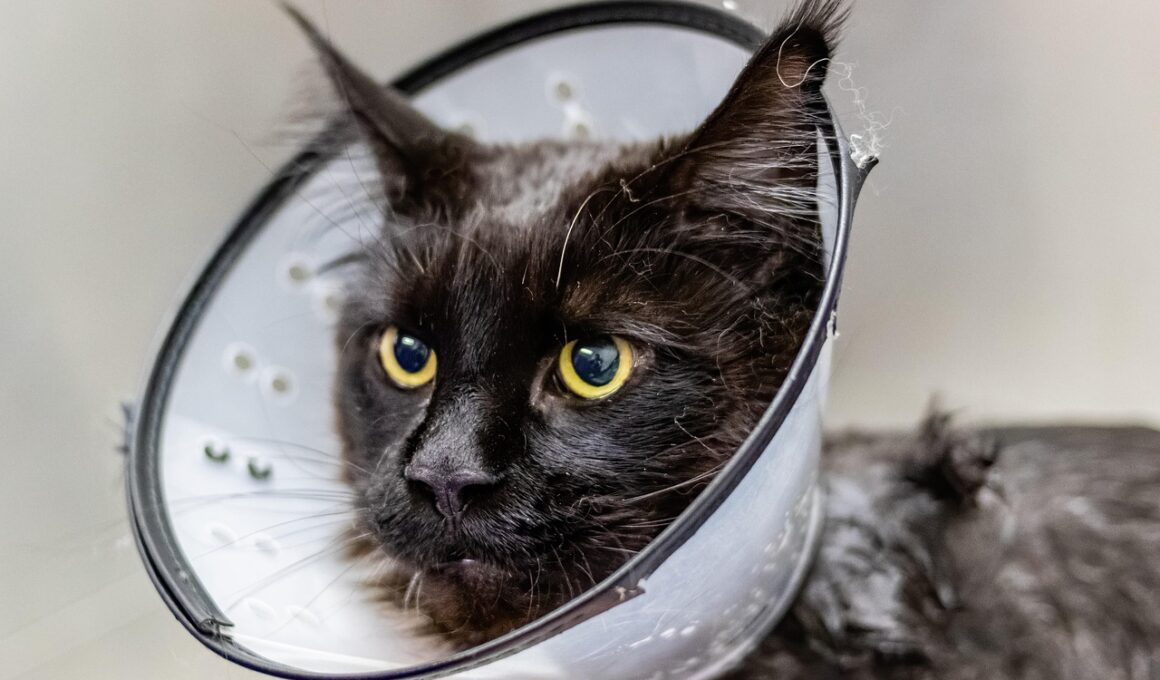Tips for Grooming Kittens with Special Needs
Grooming kittens is crucial, especially for those with special needs. Begin by establishing a calm environment, reducing any stress for the kitten. Use a gentle voice, and provide comforting touches to help them feel safe. Select grooming tools tailored for kittens, including soft brushes and flea combs. These tools should effectively remove loose fur without causing irritation. For kittens with mobility issues or injured legs, employ adaptive grooming techniques. Consider gently holding the kitten in your lap, making grooming sessions more manageable. Offer plenty of breaks to prevent exhaustion or anxiety, leading to a more positive experience.This gradual approach will help in building trust. Regularly check for any signs of discomfort, like flinching or vocalizations. If the kitten seems distressed, pause the grooming and reassure them. Another essential tip involves using treats as incentives to reward good behavior during grooming. This method promotes a positive association with the process. Remember to stay patient and consistent, as some kittens may take longer to adjust to grooming. Ultimately, grooming should be a shared bonding experience, enhancing your relationship with your special needs kitten.
Regular grooming is particularly vital for kittens with longer fur, ensuring they remain mat-free. Establish a grooming routine that aligns with your kitten’s comfort and health requirements. Start with short sessions, gradually increasing the duration as they become accustomed to the process. Often, special needs kittens may have sensitivities, requiring you to be more cautious during grooming. Keep an eye on their body language. If they show signs of discomfort, reassess your technique and approach accordingly. Utilizing aromatherapy can also create a soothing atmosphere. A light lavender scent may help calm the kitten, enhancing the grooming experience. Consider placing a soft blanket or familiar item nearby for comfort during grooming sessions. This simple addition can make a significant difference, giving the kitten a sense of security. For kittens with sensory sensitivities, choose grooming tools with softer bristles, minimizing any discomfort. Remember to clean their ears gently and regularly check for signs of infections. It’s essential to foster a gentle approach, making the kitten feel that grooming is a normal, enjoyable part of their routine. Over time, they will learn to expect it positively and look forward to those special times together.
Adapting Grooming Techniques
When caring for kittens with special needs, adapting your grooming techniques becomes paramount. Each kitten’s individual needs may vary significantly. Techniques should be customized based on their physical capabilities and comfort levels. For instance, some kittens may not tolerate traditional grooming brushes. Instead, using your hands to gently stroke their fur can be effective. This technique not only avoids potential stressors but also helps gauge their comfort levels better. Incorporate short, frequent sessions instead of extended grooming marathons, as this can overwhelm them. Introduce different textures gradually, allowing the kitten to explore and adjust at their own pace. Ensure that your grooming space is quiet and free from sudden noises to minimize anxiety. Consider using a soft, non-slip surface, providing the kitten with a sense of security. Regularly check their nails and teeth, facilitating their overall health maintenance. If possible, try to schedule veterinary check-ups to monitor any underlying health issues. This proactive approach to grooming will ensure that your kitten remains happy and healthy long-term. Be patient, and consistently encourage positive experiences with grooming, fostering trust and comfort throughout their lifetime.
For kittens with specific medical needs, consult your veterinarian for tailored grooming advice. Certain health conditions may impact the grooming process and necessitate specialized care strategies. Discuss products that are safe and effective for their unique requirements. Your vet may recommend hypoallergenic shampoos or specific conditioners suited for sensitive skin. Additionally, consider scheduling regular veterinary visits to keep an eye on their health and grooming needs. This regular check-up will help prevent any potential issues before they arise, ensuring that the grooming process remains beneficial rather than stressful. Be mindful of the kitten’s reactions to various grooming products and techniques, adjusting as necessary. Keeping a diary of their grooming sessions may help identify preferences or aversions, providing valuable insights for future sessions. In addition, creating a grooming checklist can streamline the process, ensuring that nothing essential is overlooked. Document the best practices tailored to your unique kitten’s needs, creating a personalized grooming guide. Remember, grooming is more than just a necessity; it’s an opportunity to deepen your bond. The nurturing feedback you provide during each session helps them realize that grooming is not merely a chore but a chance to connect and share love.
Grooming Tools and Techniques
Selecting appropriate grooming tools is critical for kittens with special needs. Knot-free brushes and combs are excellent choices for sensitive skin, reducing the potential for irritation. Opt for tools with rounded edges, minimizing any discomfort during brushing sessions. When bathing, utilize gentle, pH-balanced shampoos formulated for kittens. This attention to their grooming products is vital in avoiding adverse reactions. Avoid human shampoos as they may disrupt their skin’s natural barrier. For kittens that dislike water, practice dry grooming techniques, focusing on brushing and combing instead. Using an enzymatic cleaner can help with odor control, streamlining the process. Ensure you provide ample comfort and support throughout, such as holding them securely in your lap. If they become agitated, take breaks to let them relax. Always maintain a positive, calming environment to associate grooming with comfort, not distress. This strategy can immensely help build their confidence and trust in you. Excessive clinginess might indicate they need reassurance, so taking a moment to hold them can create that sense of safety. Ultimately, these small gestures accumulate over time, resulting in a more enjoyable grooming experience for both you and your kitten.
Another essential aspect to consider for special needs kittens is the mental engagement during grooming. Include gentle playtime within grooming sessions to maintain their interest and focus. Using interactive toys can create a distraction, allowing them to associate grooming positively. As you work through brushing or any other grooming task, keep conversing with them affectionately. This interaction helps reinforce their comfort while providing an engaging way to bond. After all, grooming is also about enhancing their well-being overall and satisfying their emotional needs. It’s opportunities for connection, so make the most of each session. Furthermore, recognize that consistency is vital in creating a routine. Regular, brief grooming sessions will lead to familiarity and comfort for your special needs kitten. Establishing a specific day and time each week may help alleviate potential anxieties associated with grooming. Create a soothing atmosphere using calming music or pheromone diffusers if your kitten reacts negatively to specific noises. Actual hands-on experiences through touch provide an extra layer of reassurance, making them feel more relaxed. Overall, patience, gentleness, and consistency will improve the grooming experience, ensuring a happy and healthy kitten.
Final Thoughts on Grooming Special Needs Kittens
Throughout your kitten’s grooming journey, prioritize patience and empathy. Each kitten will respond uniquely, requiring continued observation and learning on your part. Regular grooming is an essential practice that enhances your kitten’s physical appearance and overall well-being. This routine helps to identify any underlying health issues early, which is particularly important for kittens with special needs. Adaptability will be your strongest tool; find what works best for your kitten through experimentation. Whether it’s changing brushed types or adjusting your grooming environment, each small adjustment can make a significant impact. After grooming sessions, give ample praise and possibly a small treat, reinforcing that grooming leads to positive experiences. This bonding experience will transform grooming from a chore into a reaffirmation of love and care. Moreover, connecting with fellow kitten owners or joining online communities enables knowledge-sharing and support. Many parents of special needs kittens encounter similar challenges, and their experiences can provide invaluable insights. Embrace the journey ahead, learn as you grow together, and remember: grooming is an essential part of your shared life. As you observe the joy your kitten experiences during grooming, feel proud of nurturing their trust and confidence.


